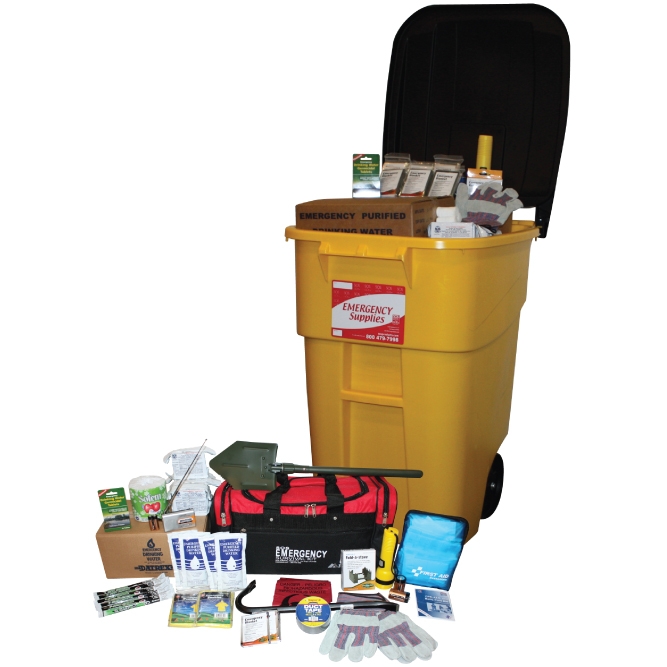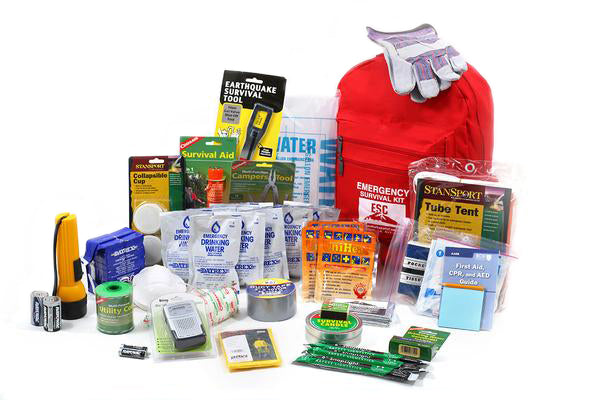Emergency Preparedness: Structure a Safer, Stronger Area With Each Other
Emergency Preparedness: Structure a Safer, Stronger Area With Each Other
Blog Article
Just How to Establish a Detailed Emergency Situation Preparedness Plan
In the world of readiness, developing a comprehensive emergency plan is not simply a task to inspect off a checklist; it is a crucial cornerstone of any type of company or person's resilience technique. From all-natural calamities to unforeseen situations, the ability to anticipate, alleviate, and react effectively can imply the difference between turmoil and control. By diligently crafting a strategy that addresses various facets of emergency administration, consisting of danger analysis, interaction methods, source appropriation, and strategic decision-making, one can lay a strong structure for guarding procedures, properties, and lives. The real effectiveness of such a plan exists not only in its production yet also in its ongoing upkeep and adaptation to evolving dangers and obstacles.
Importance of Emergency Situation Preparedness
Emergency readiness is essential for minimizing potential dangers and ensuring the security of communities and people. In today's globe, where all-natural disasters, public health and wellness situations, and other emergencies can strike without caution, being prepared can make a substantial difference in reducing the influence of these occasions. By having a well-thought-out emergency preparedness plan in position, organizations and individuals can react effectively, safeguard lives, and minimize property damage.
One of the primary reasons emergency readiness is vital is its role in saving lives. When emergencies happen, having a plan that details clear treatments for interaction, emptying, and emergency situation action can aid individuals act promptly and emphatically. This can protect against injuries and fatalities by making certain that individuals recognize what steps to take to stay secure
Moreover, emergency readiness boosts the strength of communities. By promoting a society of readiness and planning for different situations, areas can bounce back faster from interruptions and catastrophes. This strength is essential for maintaining stability, continuity of operations, and general wellness despite difficulty.
Assessing Potential Risks
Considering the significance of being gotten ready for unpredicted occasions, the first action in developing an effective emergency readiness strategy includes completely examining and assessing potential risks. This assessment requires a comprehensive review of all possible hazards that could influence the company, considering aspects such as place, industry, and historic information on cases. By recognizing these dangers, organizations can prioritize their preparedness initiatives and designate resources efficiently to mitigate one of the most considerable dangers.
Common risks that companies may face consist of all-natural catastrophes like floodings, typhoons, or quakes, technical dangers such as power failures or data violations, as well as human-caused threats like accidents or willful acts of violence. Carrying out a threat evaluation also includes considering the possible impact of these occasions on the organization's procedures, employees, clients, and reputation. By conducting a complete danger analysis, organizations can develop customized emergency response strategies that resolve their specific susceptabilities and ensure reliable preparedness for any type of possible crisis.
Producing an Interaction Plan
Developing a extensive and clear interaction strategy is important for reliable emergency situation preparedness within organizations. In times of dilemma, interaction plays a critical function in making certain the safety and well-being of workers, stakeholders, and the area. A well-balanced communication plan ought to outline clear lines of communication, assign vital employees in charge of communication tasks, and establish procedures for distributing details promptly and properly.
One key aspect of creating a communication plan is identifying alternating and main communication networks (EMERGENCY PREPAREDNESS). These can consist of email, text messaging, phone trees, social media platforms, and public address systems. It is essential to guarantee that these channels are trustworthy, easily accessible, and regularly tested to guarantee their effectiveness throughout emergency situations

Structure an Emergency Situation Kit
Provided the important relevance of readiness in times of situation, a key component that organizations should attend to is the facility of an emergency set. An emergency set works as a vital source that can aid mitigate the impact of unexpected events, ensuring that important supplies and tools are conveniently offered when required most. When putting together an emergency kit, it is vital to think about the specific demands and conditions of the company. Fundamental products such as water, non-perishable food, emergency treatment products, flashlights, batteries, and a battery-powered radio are basic elements of any emergency situation package. Additionally, organizations need to include important records, such as get in touch with lists, insurance details, and emergency situation reaction strategies, in water-proof containers within the kit. Routinely examining and updating the contents of the emergency situation kit is essential to make certain that materials are practical and current. By proactively preserving an emergency situation and developing package, organizations can boost their readiness to properly reply to situations and protect their properties and workers.
Developing Discharge Procedures
To make certain the safety and organized discharge of personnel throughout emergency situations, companies have to establish effective and clear emptying treatments. Evacuation treatments need to incorporate a variety of prospective scenarios, including fires, natural catastrophes, or various other emergencies that require swift discharge.

In addition, companies must establish a system for bookkeeping for all workers throughout an evacuation to make certain that every person has safely left the facilities. Interaction plays a crucial function in discharge procedures, with clear directions on exactly how to evacuate and when to do so. Normal evaluation and updating of evacuation treatments based upon feedback and changing conditions are necessary to preserving the effectiveness of the plan.
Verdict
In conclusion, developing an extensive emergency preparedness strategy is essential for making sure the safety and security and health of people in case of a catastrophe (EMERGENCY PREPAREDNESS). By examining potential threats, developing an interaction plan, constructing an emergency situation kit, and establishing evacuation procedures, organizations and individuals can be better furnished to respond properly to emergency situations. It is necessary to prioritize preparedness efforts to mitigate the effect of catastrophes and safeguard lives and building
In the realm of preparedness, developing an extensive emergency situation strategy is not merely a task to inspect off a list; it is an essential cornerstone of any organization or person's resilience approach. When emergency situations occur, having a plan that details clear treatments for evacuation, communication, and emergency situation feedback can aid individuals act swiftly and emphatically. Continued. By performing an extensive threat evaluation, organizations can develop customized emergency situation action strategies that resolve their certain vulnerabilities and make sure efficient readiness for any kind of possible dilemma
Establishing a thorough and clear interaction strategy is crucial for efficient emergency situation readiness within companies. By assessing possible risks, creating a communication strategy, developing an emergency package, and establishing emptying individuals, treatments and organizations can be much better geared up to respond efficiently to emergencies.
Report this page